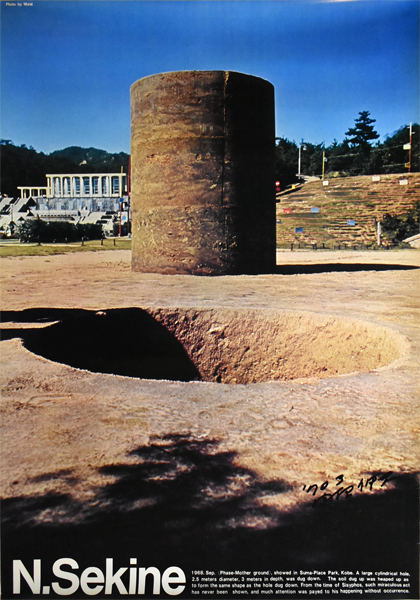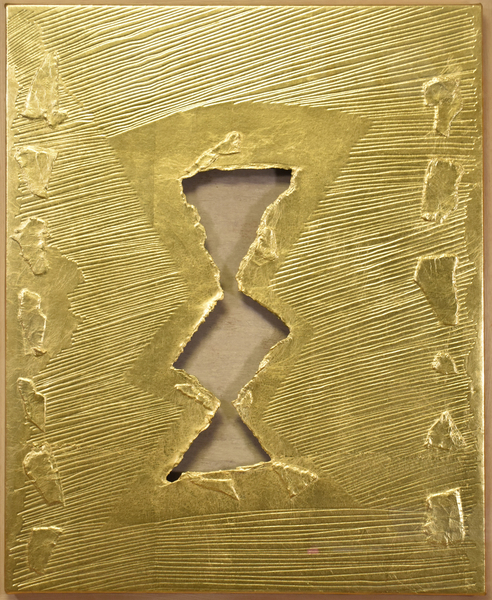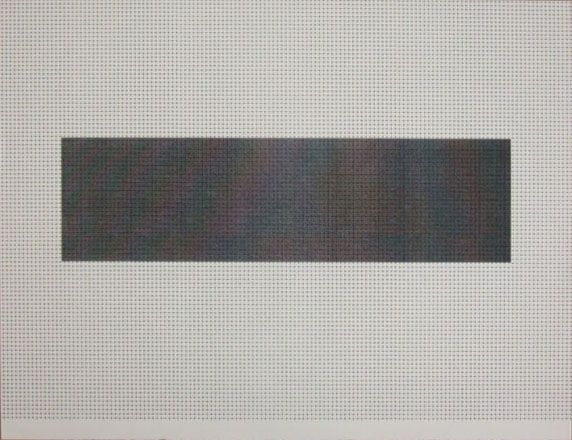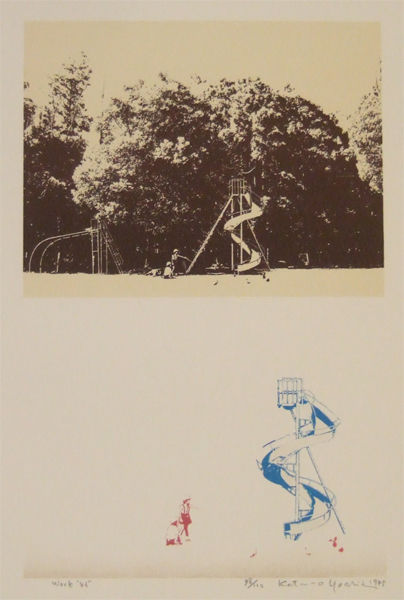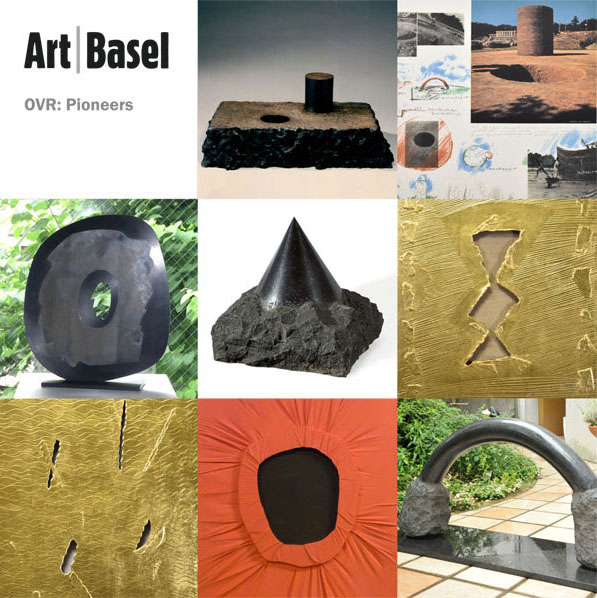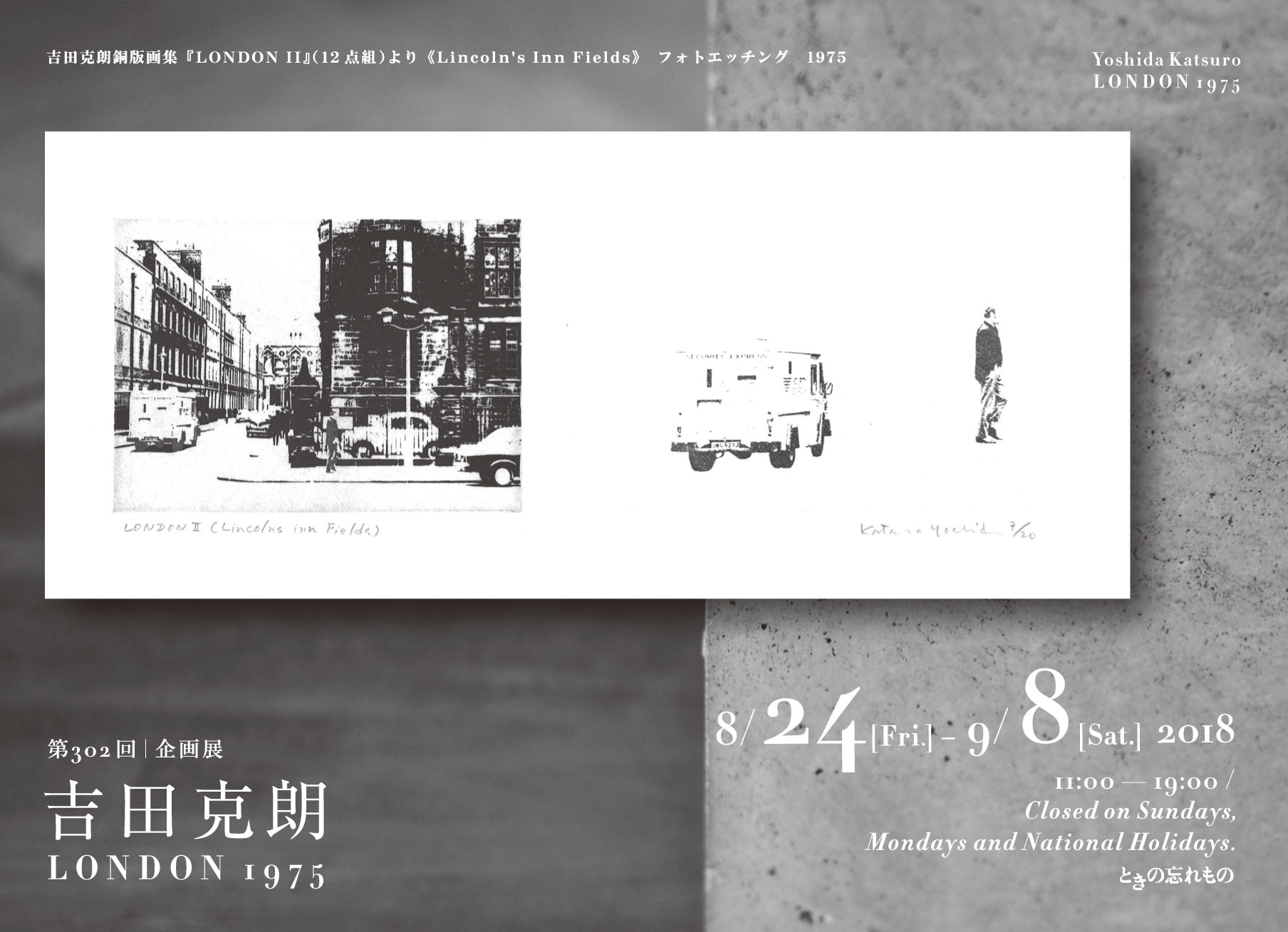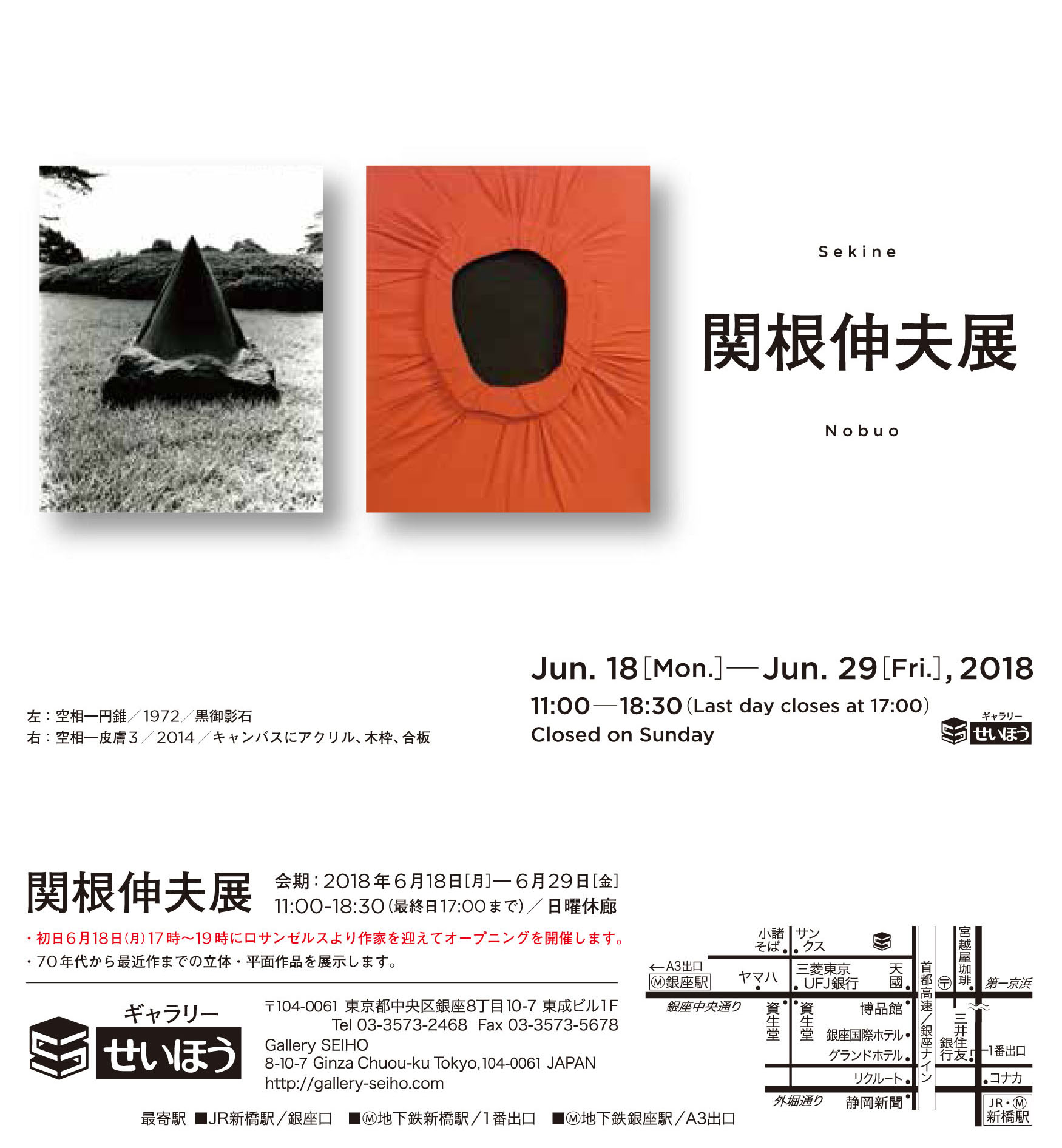Mono-ha
|
Mono-ha was an art movement that took place in Japan around the 1970s.
With influence from Takamatsu Jiro, who was teaching at Tama Art
University at the time, the artists endeavored to redefine pictorial
expression. The "Tricks and Vision" exhibition in 1968 displayed
works that brought under question the pictorial expression of
Western tradition. Takamatsu Jiro and Sekine Nobuo both particiated
in this exhibition and it continued to influence Mono-ha activity
long afterwards. Also at that time, the categories of the Kobo
Exhibitions were changed from "paintings" and "sculpture" to "flat"
and "three dimensional". Along with this trend, many three
dimensional works were made from 1968 to 1969 that moved away from
the act of "making", and instead focused on unprocessed materials
like wood, stone, glass, and earth as the main aspect of a work.
Many of the artists who made such works came from a background in
painting. In Sekine Nobuo's "Phase - Mother Earth", a representative work of Mono-ha, an enormous cylindrical hole is dug out of the earth, and a cylindrical mound of earth of the same dimensions is piled up beside it, as if the earth of the hole had simply been moved over. In Lee Ufan's "Phenomena and Perception B", a large rock is placed on a pane of glass, and cracks run across the surface of the glass, ostensibly from the action of placing the rock. With these kinds of works, the artists work to be concious of the self and the outside world through material and object. With the opening of exhibitions collecting these works, coverage in magazines, and so on, this movement began to be called Mono-ha. In 1986, the art critic Minemura Toshiaki defined Mono-ha as such: "Mono-ha refers to a group of artists active in Japan around the 1970s who endeavored to draw out some form of artistic language directly from the state and function of material and objects by using those unprocessed and natural "things" ("mono") as the center on the stage of artistic expression." (Minemura Toshiaki "What Was Mono-ha" Kamakura Gallery) Mono-ha had a great influence on contemporary art in Japan, and many movements surpassing it came to be later on. Those were referred to as "post-Mono-ha", and the exhibition "Mono-ha and Post-Mono-ha Japanese Art After 1969" was held at the Seibu Museum of Art in 1987 under the supervision of Minemura Toshiaki. Related artists: LEE Ufan, SEKINE Nobuo, YOSHIDA Katsuro, SUGA Kishio, NARITA Katsuhiko, KOSHIMIZU Susumu, ENOKURA Kenji, TAKAYAMA Noboru, HARAGUCHI Noriyuki, HONDA Shingo, FUJII Hiroshi, HABU Makoto, NOMURA Hitoshi, INUMAKI Kenji
2021
◆Art Basel OVR: Pioneers 3/24~3/28 2018 Yoshida Katsuro LONDON 1975 8/24―9/8 2006
|
||||||||||||||||||||||||||||
Inquiry formt> |

